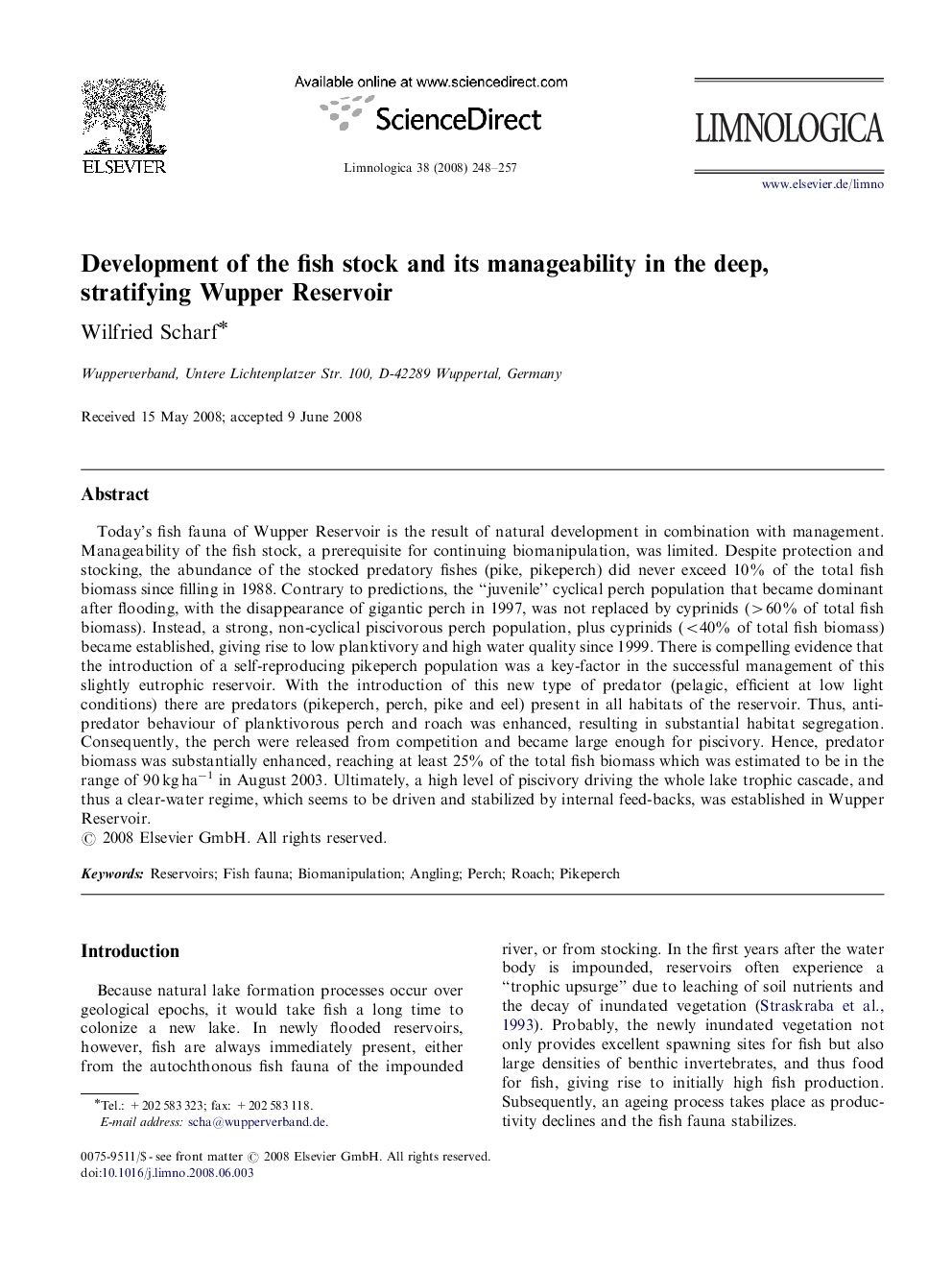| Article ID | Journal | Published Year | Pages | File Type |
|---|---|---|---|---|
| 4400684 | Limnologica - Ecology and Management of Inland Waters | 2008 | 10 Pages |
Abstract
Today's fish fauna of Wupper Reservoir is the result of natural development in combination with management. Manageability of the fish stock, a prerequisite for continuing biomanipulation, was limited. Despite protection and stocking, the abundance of the stocked predatory fishes (pike, pikeperch) did never exceed 10% of the total fish biomass since filling in 1988. Contrary to predictions, the “juvenile” cyclical perch population that became dominant after flooding, with the disappearance of gigantic perch in 1997, was not replaced by cyprinids (>60% of total fish biomass). Instead, a strong, non-cyclical piscivorous perch population, plus cyprinids (<40% of total fish biomass) became established, giving rise to low planktivory and high water quality since 1999. There is compelling evidence that the introduction of a self-reproducing pikeperch population was a key-factor in the successful management of this slightly eutrophic reservoir. With the introduction of this new type of predator (pelagic, efficient at low light conditions) there are predators (pikeperch, perch, pike and eel) present in all habitats of the reservoir. Thus, anti-predator behaviour of planktivorous perch and roach was enhanced, resulting in substantial habitat segregation. Consequently, the perch were released from competition and became large enough for piscivory. Hence, predator biomass was substantially enhanced, reaching at least 25% of the total fish biomass which was estimated to be in the range of 90 kg haâ1 in August 2003. Ultimately, a high level of piscivory driving the whole lake trophic cascade, and thus a clear-water regime, which seems to be driven and stabilized by internal feed-backs, was established in Wupper Reservoir.
Related Topics
Life Sciences
Agricultural and Biological Sciences
Aquatic Science
Authors
Wilfried Scharf,
